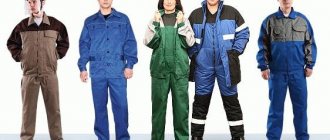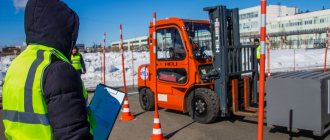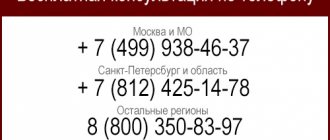I. General provisions
1. A person with a higher education – a bachelor’s degree – is appointed to the position of breeder-zootechnician. Additional professional education is recommended - advanced training programs at least once every five years.
2. No practical experience is required.
3. Appointment to the position of breeder-zootechnician, as well as dismissal from it, is made by order of the head of the organization.
4. The livestock breeder must know:
4.1. Genetics of animals of different species
4.2. Genetic abnormalities in animals of different species
4.3. Phenotype and genotype of animals
4.4. The doctrine of animal ontogeny: the concept of growth and development; features of growth, development and reproduction of animals of different species; Determination of growth rate: changes in physique during growth
4.5. Variability of the animal body: combinative, mutational, ontogenetic, modification
4.6. The doctrine of blood groups and biochemical polymorphism of animals (immunogenetics)
4.7. The doctrine of animal breeds: the concept of a breed, factors of breed formation, classification of breeds, structure of the breed (types, lines, families), acclimatization of breeds
4.8. The doctrine of animal selection: the concept of selection, types, intensity, characteristics, genetic basis
4.9. Productivity of different types of animals: dairy, meat, wool, smushkovaya, fur coats, workers, eggs
4.10. Correlations between indicators of productivity and reproduction in animals
4.11. Heritability of traits of productivity and reproduction in animals
4.12. The influence of environmental factors on the growth, development and realization of genetic capabilities of animals of different species
4.13. Methods for assessing and selecting animals according to a set of characteristics: by origin (pedigree), by constitution and exterior, by productivity, by technological characteristics, by the quality of offspring, sires and queens by prepotency
4.14. Indexing when assessing breeding animals based on a set of traits
4.15. The doctrine of selection of animals: the concept of selection, form (individual, group), homogeneous, heterogeneous, age, linear; taking into account family relationships, genealogical compatibility, degree of prepotency, periodic replacement of producers
4.16. Ways to use heterosis in animal husbandry
4.17. Animal breeding methods: purebred (related, along lines and families), crossing (reproductive, absorptive, industrial, introductory), interspecific hybridization
4.18. Methods for breeding, improving and using breeds, types, lines of animals of different species
4.19. Methods for testing new breeds, breed groups, intrabreed lines
4.20. Large-scale animal breeding
4.21. Biotechnological methods for breeding, improving, preserving and using breeds, types and lines of animals: artificial insemination, in vitro fertilization, embryo transplantation, cloning, cellular and chromosome engineering
4.22. The system of breeding service bodies in livestock farming of the Russian Federation
4.23. Legal regulation of livestock breeding for planning and carrying out selection and breeding work in breeding organizations
4.24. Legislation of the Russian Federation on rights to selection achievements
4.25. Responsibilities of patent holders to maintain the breed (type, lines) of animals during the validity period of the patent (author's certificate)
4.26. Standards for a set of characteristics of breeds, intrabreed types, families and lines of animals bred in the organization
4.27. The importance of tagging and identification of breeding animals and materials (bird hatching eggs) in selection and breeding work
4.28. Rules and techniques for marking breeding animals and materials (bird hatching eggs)
4.29. The procedure for assigning nicknames to breeding animals
4.30. Methods for testing selection achievements (breeds, types, lines) for distinctiveness, homogeneity, stability (breed testing) of animals of different species
4.31. Methods for taking into account the productive, reproductive and breeding qualities of animals of different species
4.32. The procedure for maintaining documentation of zootechnical and breeding records
4.33. The procedure for registering life events of breeding animals
4.34. The procedure for using standard and/or special information and communication programs for processing indicators of animal productivity and reproduction
4.35. The procedure for submitting materials to the State Pedigree Register and state books of breeding animals
4.36. Rules for the selection, registration and provision of biomaterials from animals for genetic examination in special laboratories
4.37. Methods of deep freezing, restoration and use in selection and breeding work of biological material of breeding animals (gametes, zygotes, embryos)
4.38. Exterior of animals of different species, areas of productivity and methods of its assessment
4.39. Types of constitution of animals of different species and areas of productivity and methods for its assessment
4.40. Methods for assessing, selecting and selecting animals of different species according to the complex
4.41. Standards for productive and reproductive qualities of adult animals and their offspring of different breeds, types, lines
4.42. Rules and conditions for determining a comprehensive assessment (grading) of breeding animals of different species
4.43. Standard and/or special information and communication programs on livestock breeding
4.44. Relevance of conservation of biodiversity of farm animals
4.45. Gene pool of domestic and foreign animal breeds of different species
4.46. Methods of purebred animal breeding
4.47. Stabilizing animal crossing
4.48. Standards of small and endangered breeds of animals preserved in the organization based on exterior features, productive and reproductive indicators
4.49. Occupational safety requirements
4.50. ___________________________________________________________________________
5. The livestock breeder reports directly to ____________.
6. During the absence of the breeder-zootechnician (vacation, illness, etc.), his duties are performed by a person appointed in the prescribed manner. This person acquires the corresponding rights and is responsible for their proper execution.
7. ________________________________________________________________
Features of work
Often a livestock specialist is confused with a veterinarian, mistakenly believing that these are different names for the same profession. But these specialists have different job responsibilities: a veterinarian treats domestic animals, and a livestock specialist works with agricultural breeds. The scope of its tasks includes not only disease prevention, but also assessment of feed quality, selection, and breeding. The goal of a livestock specialist’s work is to obtain as much product as possible with minimal labor and financial costs.
II. Job responsibilities
The responsibilities of a livestock breeder include:
1. Breeding, improvement and preservation of breeds, types, lines of animals:
— Development of a plan for breeding, improving and preserving breeds, types, lines of animals (selection and breeding work) in the organization
— Submission of a plan for selection and breeding work in the organization to regional/federal bodies for livestock breeding
— Planning and control of reproduction (turnover) of the animal herd
— Development of measures to increase the efficiency of selection and breeding work with breeding animals in the organization
— Organization of the work of workers on tagging breeding animals and materials (hatching eggs) by assigning unified identification numbers
— Organization of work of workers to determine indicators of productivity and reproduction of breeding animals
— Organizing the work of workers to maintain primary zootechnical and breeding records
— Selection and assessment of breeding animals: by origin (pedigrees), by constitution and exterior, by productivity, by technological characteristics, by the quality of offspring, sires and dams by prepotency
— Carrying out the selection of breeding animals and materials (sperm of producers, embryos, hatching eggs of birds) for the reproduction of the herd in the organization in the process of breeding, improving and preserving breeds, types, lines
— Ensuring that genetic testing is carried out to determine the authenticity of the origin of animals and to identify genetic anomalies
— Submission of genetic examination results to information support systems for livestock breeding for genetic monitoring
— Assessing bred and improved breeds (types, lines) of animals for distinctiveness, uniformity and stability
— Conducting an analysis of the conformity of the exterior, productivity and reproduction indicators of breeding animals with those specified in the description of the breed (type, line) in the State Register of Protected Breeding Achievements
2. Carrying out a comprehensive assessment (grading) of breeding animals:
— Organization of preparation of documentation and equipment for the annual comprehensive assessment (grading) of breeding animals of different breeds, types, lines
— Assessment of the exterior and constitution of animals of different breeds, types, lines to determine their breeding value independently and as part of a group of experts
— Carrying out instrumental measurements of animals of different breeds, types, lines during grading independently and as part of a group of experts
— Determination of the grading class of breeding animals of different breeds, types, lines independently and as part of a group of experts as a result of grading
3. Conservation of small and endangered animal breeds:
— Organization of purebred animal breeding
— Organization of stabilizing selection of animals
— Conducting an annual assessment of animal breeds (types, lines) for distinctiveness, uniformity and stability
Limitations on health and psychological qualities
If we consider psychological qualities and our health, livestock specialists are always presented with a number of requirements.
- It is necessary to think on the basis of careful observation. As you know, this makes it possible to more carefully plan or organize something.
- It is important to quickly switch to another object if the situation requires it. In other words, selectivity is required.
- A prerequisite for hiring specialists is a love of animals. If a person hates livestock, it will negatively affect everyone. For example, in the case of owners of specialized enterprises, they will not be able to fulfill the given plan, because the animals did not receive enough food, or the zoologist often beat them, as a result of which the animals suffered from deteriorating health.
- Increased level of logic, ability to quickly make the necessary decisions if circumstances arise.
- Having a developed memory, good physical fitness.
In addition to the requirements, there are also a number of contraindications that apply to specialists in this profession. For example, people who have poor hearing or poor vision cannot become .
If a person suffers from allergic reactions caused by animals, he will not be able to work on the territory of a farm enterprise. Contraindications include the presence of asthma or serious problems with the cardiovascular system.
People whose musculoskeletal system does not work properly will not be able to work on the farm.
III. Rights
The breeder-zootechnician has the right:
1. Request and receive the necessary information, as well as materials and documents related to issues of their activities.
2. Improve your qualifications, undergo retraining (retraining)
3. Take part in the discussion of issues included in his functional responsibilities.
4. Make suggestions and comments on how to improve activities in the assigned area of work.
5. Require the management of the organization to provide assistance, including ensuring organizational and technical conditions and execution of the established documents necessary for the performance of official duties.
6. Make independent decisions, guided by qualification requirements and job responsibilities
7. ___________________________________________________________
Where might a livestock technician be needed?
Livestock specialists are specialists who work in the field of animal husbandry. They conduct their labor activities on the territory of special livestock complexes. This is where their second name came from – livestock breeders.
Livestock specialists are in demand specialists for owners of private farms , as well as managers of state enterprises. They can work in special factories where livestock, poultry, and so on are raised.
IV. Responsibility
The livestock breeder is responsible for:
1. For improper performance or failure to fulfill one’s job duties provided for in this job description - within the limits determined by the current labor legislation of the Russian Federation.
2. For offenses committed in the course of carrying out their activities - within the limits determined by the current administrative, criminal and civil legislation of the Russian Federation.
3. For causing material damage - within the limits determined by the current labor and civil legislation of the Russian Federation.
4. ____________________________________________________________________
This job description has been developed in accordance with the provisions (requirements) of the Labor Code of the Russian Federation dated December 30, 2001 No. 197 FZ (Labor Code of the Russian Federation) (with amendments and additions), the professional standard “Breeder for livestock breeding” approved by order of the Ministry of Labor and Social Protection Russian Federation dated December 21, 2020 No. 1034n and other regulations governing labor relations.
Requirements for the skills and abilities of a specialist
Of course, becoming a livestock breeder or livestock feed breeder is not so easy, no matter how strong the love for animals is. To really get a good employee, employers check candidates for compliance with profile requirements. A specialized specialist must understand:
- regulatory legal acts and professional terms;
- requirements for production products, as well as standards for conducting agricultural activities;
- biological features of the structure of animals raised in agriculture, features of their maintenance, specialized rules regarding feeding;
- innovations that arose thanks to the development of modern sciences;
- methods of raising livestock;
- zoological, genetic and physiological principles, be able to apply in practice the rules of veterinary obstetrics using the example of farm animals;
- new methods of manufacturing products using livestock;
- modern standards that apply to livestock products;
- some diseases of livestock, features of its treatment and maintenance of normal health;
- modern communications, features of working with specialized software (for example, when it is necessary to count feed for several days in advance, and special software is used for this);
- rules for using computers in the practical activities of livestock farmers;
- economic features, management, as well as organization of labor activities;
- basic requirements of Russian legislation regarding labor activity;
- rules established for the purpose of labor protection, preventing fires and unauthorized entry of intruders into private territory, maintaining order and cleanliness.
Read more: Is it possible to write a deed of gift for a mortgaged apartment?
The livestock breeder needs to clearly understand the essence of his professional activity . To improve the productivity of an enterprise, you need to read specialized literature from time to time and familiarize yourself with innovations in the livestock sector. Don't be afraid to take risks if they pay off. On the other hand, you also need to take risks wisely, having previously notified management and warned them about the possible consequences . Competent specialists always use progressive methods for solving problems of various kinds and are able to give an adequate assessment of their events.
No zoologist can work for a long time at an enterprise if he does not know how to interact with the team . It is important to understand who a person is and what position he holds. You should be extremely focused, learn to transfer your specialized knowledge to newcomers, introducing them to the main features of work activity.
The livestock specialist not only interacts with animals and enterprise personnel, but also works with documentation if this is directly necessary.
Milkmaid - thrush/Milkmaid
First you need to select cows. This is a difficult step and should be carefully considered. It is better to buy a purebred cow. It is necessary to check that the parents of a particular cow are of the same breed. Experts recommend paying attention to the shape of the udder; for dairy cows, the ideal shape is cup-shaped and bath-shaped.
I'm hiding from everyone for now. First of all, I smell bad and my hands are shaking.










